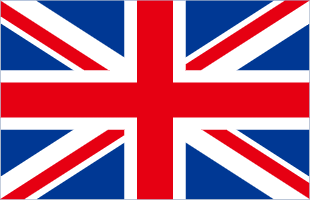IP68 und IPX7 sind zwei der gängigsten Wasserbeständigkeitsklassen für elektronische Geräte und Ausrüstung. Beide bedeuten unterschiedliche Dinge und in diesem Leitfaden geben wir Ihnen einen vollständigen Überblick über die IP68/IPX7 Unterschiede und Fähigkeiten. Wir beginnen mit einem kurzen Vergleich der beiden IP-Bewertungen.
IP68 vs. IPX7: Was sind die wichtigsten Unterschiede?
Die Internationale Elektrotechnische Kommission (IEC) vergibt IP-Schutzarten an Gerätegehäuse basierend auf ihrem Schutz gegen Feststoffe wie Staub und Feuchtigkeit, beispielsweise durch Eintauchen in Süßwasser oder Regen. Auf den „IP“-Teil der IP-Schutzart folgen zwei Zahlen, die den Schutz gegen Feststoffe bzw. Flüssigkeiten angeben.
Die Staubbeständigkeit reicht von 0 bis 6 und die Flüssigkeitsbeständigkeit von 0 bis 8. Das bedeutet es für IP68 und IPX7:
• IP68: Zeigt an, dass ein Gerät staubdicht (6) ist und dauerhaftes Eintauchen in Wasser mit einer Tiefe von mehr als einem Meter übersteht. Die konkrete Tiefe und Dauer werden vom Hersteller festgelegt.
• IPX7: Das „X“ in IPX7 bedeutet, dass es keine spezielle Einstufung für den Staubschutz gibt. Das Gerät kann für eine bestimmte Dauer (normalerweise 30 Minuten) einem Eintauchen in Wasser bis zu einer Tiefe von 1 Meter standhalten.
Beachten Sie, dass X nicht 0 Schutz bedeutet. Das IP-Bewertungssystem hat im letzten Jahrzehnt an Popularität gewonnen. Daher wurde bei vielen Geräten die Staubresistenz nicht getestet oder dies ist aus dem einen oder anderen Grund nicht möglich. Dies bedeutet nicht, dass das Gerät nicht wetterfest ist. Es könnte auch bedeuten, dass der Test noch aussteht.
Wasserbeständigkeit zwischen IP68 und IPX7
Lassen Sie uns nun speziell über die Wasserbeständigkeit der beiden Gerätegehäusetypen sprechen. Die höchste Wasserbeständigkeit, die ein Gerät bieten kann, ist „8“ gemäß IEC. IP68 hat die Wasserbeständigkeitsstufe 8 und ist damit höher als die Schutzklasse 7 bei IPX7.
Gemäß dem offiziellen Leitfaden bedeutet die zweite Ziffer für Wasser:
• Geschützt gegen die Auswirkungen eines zeitweiligen Untertauchens in Wasser bei 7.
• Geschützt gegen die Auswirkungen von dauerhaftem Eintauchen in Wasser bei 8.
Dies bedeutet, dass ein Gehäuse mit der zweiten Ziffer 7 in der IP-Schutzart bis zu einer Tiefe von einem Meter für 30 Minuten oder weniger in Wasser eingetaucht werden kann. Ein Gehege, dessen zweite Ziffer eine 8 ist, kann tiefer und/oder länger sein. Die genaue Tiefe und Dauer werden nach einer Prüfung ermittelt und können von Gerät zu Gerät eines Herstellers unterschiedlich sein.

Der Unterschied zwischen IPX7 und IP68 ist, was die Wasserbeständigkeit betrifft, ziemlich ähnlich. Wenn Sie Ihr Gerät nicht für längere Zeit in Wasser tauchen, sollten beide Optionen gut geeignet sein. Beide bieten umfassenden Schutz vor Spritzern, verschüttetem Wasser und sogar versehentlichem Tropfen Wasser.
Beachten Sie, dass die gesamte Wasserbeständigkeit auf Grundlage der Auswirkung von Süßwasser auf das Gerätegehäuse berechnet wird. Salzwasser und andere Flüssigkeiten können selbst innerhalb der Gerätegrenzen größeren Schaden anrichten. Am sichersten ist es daher, diese stets von Ihrem Gerät fernzuhalten.
Wie wählt man aus?
Kommen wir nun zum Kern der Diskussion: Wie entscheiden Sie sich zwischen einem IPX7- und einem IP68-Gerät? Vorausgesetzt, alles andere ist gleich, sollten Sie die folgenden Überlegungen im Hinterkopf behalten, um eine fundiertere Kaufentscheidung treffen zu können:
• Wenn Sie Wetterfestigkeit und Staubschutz benötigen, ist die Schutzklasse „6“ von IP68 für soliden Schutz ein Muss. Das IPX7-Gerät ist hingegen nicht geprüft, es kann aber auch maximal bis 6 gehen, was das IP68-Gerät bereits ist.
• Wenn Sie mehr Wasserbeständigkeit benötigen, ist die Schutzklasse 8 des IP68-Geräts für Sie besser geeignet als die Schutzklasse 7 des IPX7-Geräts.
• Wenn Sie keinen Wert auf Staubbeständigkeit und eine etwas bessere Wasserbeständigkeit legen, ist die Leistung bei beiden Geräten gut.
Insgesamt kann man davon ausgehen, dass die Schutzart IP68 objektiv besser ist als die Schutzart IPX7. Es verfügt über eine höhere Wasserbeständigkeit und einen bestätigten vollständigen Staubschutz und Wetterfestigkeit. Daher ist es fast immer das bessere Gerät. Aber Ihr Anwendungsfall und die Preise der Geräte bestimmen, welche Option für Sie die bessere ist.
IP68 ist ideal für Situationen, in denen Ihre Ausrüstung über einen längeren Zeitraum Wasser ausgesetzt sein könnte, beispielsweise bei Unterwasserfotografie oder Aktivitäten, die dauerhaftes Untertauchen erfordern. Diese Technologie findet sich häufig in High-End-Smartphones, Smartwatches und robuster Outdoor-Ausrüstung wie dem Hochleistungs- robuste Smartphones.
IPX7 hingegen eignet sich für Geräte, die gelegentlichem Spritzwasser oder kurzem Untertauchen ausgesetzt sind. Diese Geräte eignen sich für alltägliche Situationen wie das versehentliche Verschütten von Flüssigkeiten oder die Verwendung Ihrer Ausrüstung bei leichtem Regen.
So, jetzt haben Sie eine klarere Vorstellung vom Ganzen. IP68/IPX7 Debatte.
Entdecken Sie die Hochleistungsgeräte von Oukitel mit IP68-Schutz


















